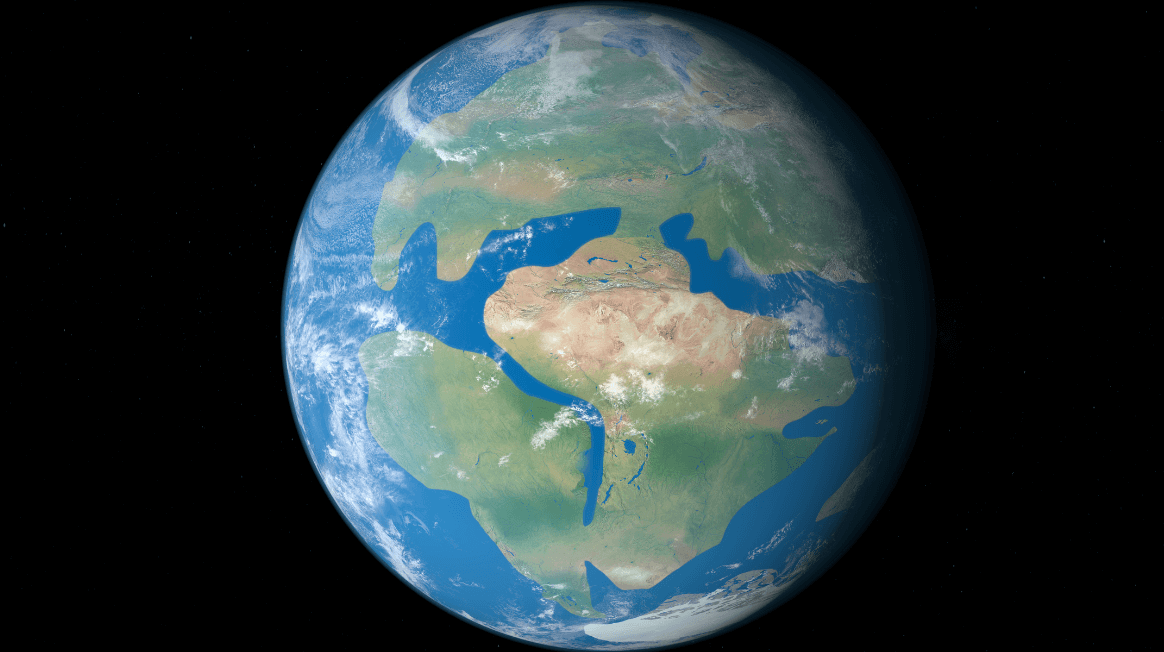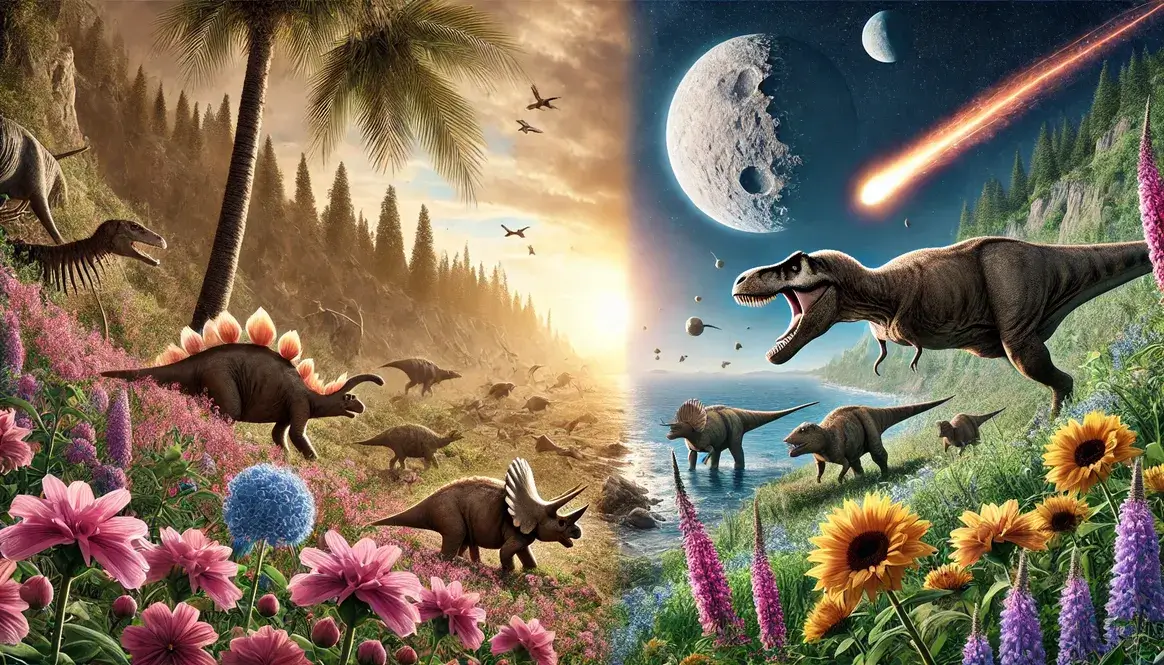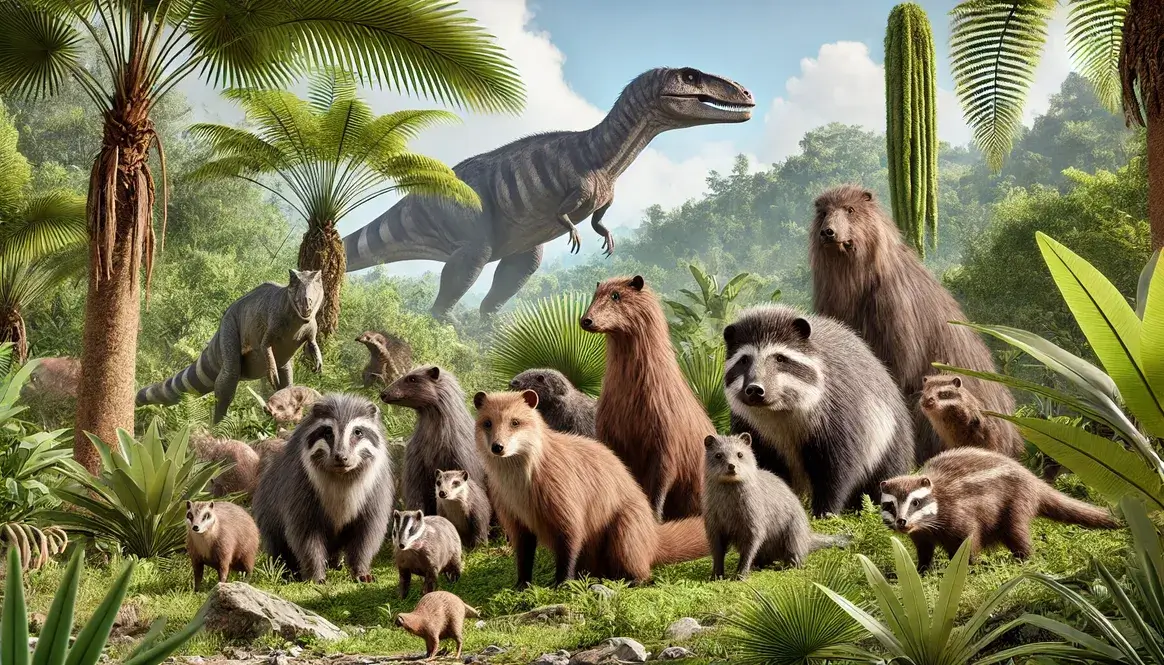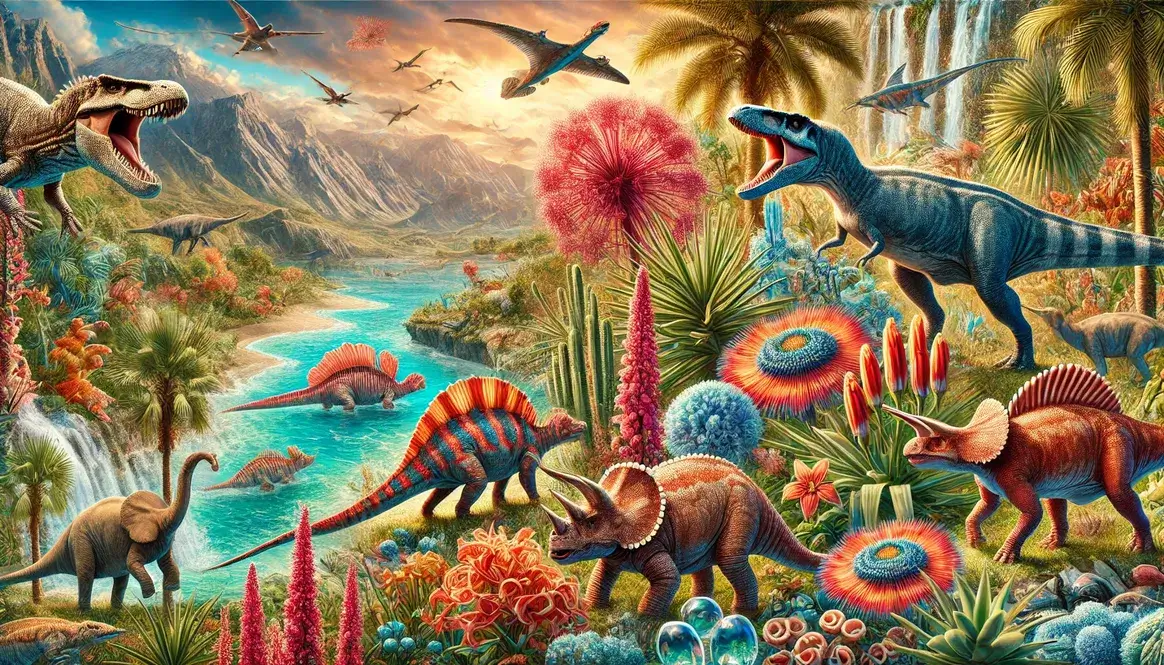The Cretaceous period, spanning from 145 to 66 million years ago, was a time of incredible change for our planet. During this era, dinosaurs roamed the Earth, but the ground beneath their feet was far from stable. The continents were on the move, slowly but surely reshaping the face of the globe.
Imagine the Earth as a giant jigsaw puzzle, with the continents as its pieces. During the Cretaceous, these pieces were sliding around, breaking apart, and coming together in new ways. This process, known as continental drift, had been going on for millions of years and continues even today!
Continents during Cretaceous: Breaking Apart
At the start of the Cretaceous, the continents looked very different from what we see on maps today. Instead of seven separate continents, there were just two enormous landmasses: Gondwana in the south and Laurasia in the north.
Gondwana was a supercontinent that included what would become South America, Africa, Antarctica, Australia, and India. Laurasia, on the other hand, was made up of what we now call North America, Europe, and Asia. Between these two giants lay a vast ocean called the Tethys Sea.
Early Cretaceous Continental Configuration
Let’s take a closer look at how the world was arranged during the early Cretaceous:
| Landmass | Components |
|---|---|
| Gondwana | South America, Africa, Antarctica, Australia, India |
| Laurasia | North America, Europe, Asia |
The Tethys Sea, a large body of water between Gondwana and Laurasia, played a crucial role in the climate and ecosystems of the time. It was home to many marine reptiles and influenced weather patterns across the globe.
The Breakup of Gondwana
As the Cretaceous progressed, Gondwana began to break apart. One of the most significant events was the separation of South America and Africa. Imagine slowly pulling apart a chocolate bar – that’s kind of how these two continents split!
This separation created a narrow sea between them, which gradually widened to become the South Atlantic Ocean. As this happened, new coastal environments formed, providing homes for many plant-eating dinosaurs.
Meanwhile, India was on a journey of its own. It broke away from the rest of Gondwana and began moving northward, like a ship sailing across the ancient seas. This journey would eventually lead to a collision with Asia, but that’s a story for another time!
Changes in Laurasia
While all this was happening in the south, Laurasia was experiencing its own changes. North America started to drift away from Eurasia (the combined landmass of Europe and Asia). This separation created a gap that would eventually become the North Atlantic Ocean.
As North America moved westward, it also began to separate from Greenland. This movement created new seas and changed ocean currents, which in turn affected the Cretaceous climate.
These shifting continents didn’t just change the map – they had a huge impact on the plants and animals of the time, including the mighty dinosaurs that ruled the Cretaceous world. The movement of continents created new habitats, changed weather patterns, and influenced the evolution of countless species.
Mid-Cretaceous Continental Shifts
As the Cretaceous period progressed, the Earth’s surface continued its dramatic makeover. The continental breakup that began earlier picked up speed, leading to the formation of new ocean basins. This reshaping of the planet’s geography had far-reaching effects on climate, ecosystems, and the evolution of life.
The South Atlantic Opens
The gap between South America and Africa, which started as a narrow strait, grew wider and wider. Imagine two friends standing close together, then slowly walking backwards – that’s how these continents moved apart! This widening created the South Atlantic Ocean, a process that had significant consequences:
- New ocean currents: As the South Atlantic expanded, new ocean currents developed, altering global water circulation.
- Climate changes: These new currents affected weather patterns across both continents.
- Evolving ecosystems: Coastal areas transformed, creating new habitats for marine life and shore-dwelling creatures.
The opening of the South Atlantic didn’t just affect the immediate area. It changed wind patterns and ocean currents globally, influencing climates as far away as the poles. This shift played a role in the warm, mild climate that characterized much of the Cretaceous period.
India’s Rapid Northward Drift
While the South Atlantic was opening, India was on a remarkable journey of its own. It separated from Madagascar and began racing northward at an astonishing speed (for a continent, that is) of about 20 centimeters per year. To put that in perspective, that’s about as fast as your fingernails grow!
India’s movement had two major consequences:
- It led to the formation of the Indian Ocean.
- It set the stage for a massive collision with Asia that would later form the Himalayas.
This northward journey drastically changed the geography of the Indian Ocean region and had significant impacts on global climate patterns.
Late Cretaceous: Emerging Modern Continents
By the late Cretaceous, about 80 million years ago, the continents were starting to look more familiar. While not exactly like today’s map, an observer from space might have begun to recognize the shapes of modern continents emerging.
Formation of the Indian Ocean
As India continued its northward journey, it completely separated from Antarctica and Australia. This separation led to the development of the Indian Ocean basin as we know it today.
| Continent | Movement |
|---|---|
| India | Rapidly moving north |
| Antarctica | Remaining near the South Pole |
| Australia | Slowly moving northeast |
This reconfiguration had profound effects on ocean currents and global climate. The isolation of Antarctica, for instance, set the stage for the development of the cold, polar climate it experiences today.
North America and Europe: The Final Split
In the northern hemisphere, North America and Europe were completing their separation. The North Atlantic Ocean widened, pushing these continents further apart. This process also led to the formation of the Labrador Sea between North America and Greenland.
These changes had significant impacts:
- They altered ocean circulation patterns in the Northern Hemisphere.
- New coastal environments emerged, providing habitats for various Cretaceous ocean life.
- The widening oceans influenced weather patterns, affecting both marine and terrestrial ecosystems.
As the Cretaceous drew to a close, the stage was set for the world we know today. The continents were nearing their modern positions, though the journey wasn’t over yet. Earth’s restless surface continued to shift and change, influencing the course of life’s evolution in the process.
Cretaceous Sea Levels: A Flooded World
The Cretaceous period wasn’t just a time of shifting continents – it was also an era of remarkably high sea levels. Imagine a world where vast areas of our continents were underwater, creating a landscape dotted with shallow seas and islands. That’s what Earth looked like during much of the Cretaceous!
Sea levels during this time were up to 300 meters higher than they are today. But why? There were two main reasons:
- Plate tectonics: As new oceanic crust formed, it displaced water, causing sea levels to rise.
- Warm climate: The Cretaceous was a greenhouse world, with no polar ice caps. All that melted ice added to the volume of the oceans.
Continental Flooding
With such high sea levels, large portions of the continents were submerged under shallow seas. These seas created new marine environments and dramatically altered the geography of the time.
Two of the most significant inland seas were:
- Western Interior Seaway: This massive sea split North America in two, stretching from the Arctic Ocean to the Gulf of Mexico.
- Tethys Sea: This ancient ocean separated the northern and southern continents, covering much of what is now southern Europe, North Africa, and the Middle East.
These shallow seas were teeming with life, including fearsome marine reptiles like mosasaurs and plesiosaurs. They also provided habitat for many species of flying dinosaurs that fed on fish and other marine life.
Impact on Coastal Environments
The high sea levels of the Cretaceous had a profound impact on coastal environments:
- New habitats emerged, including extensive coral reefs and shallow marine ecosystems.
- Coastal plains and river deltas expanded, providing lush habitats for plant-eating dinosaurs.
- Islands formed as higher areas of land were isolated by rising waters.
These changes spurred evolution and increased biodiversity. The isolation of populations on islands and the creation of new ecological niches led to the development of new species, contributing to the rich diversity of Cretaceous life.
Climate and Ecosystems: Shaped by Shifting Lands
The movement of continents during the Cretaceous didn’t just change the map – it had a significant impact on global climate and ecosystems. As landmasses shifted, they altered ocean currents and wind patterns, reshaping the world’s climate zones.
Development of New Climate Zones
As continents moved, new climate zones formed:
- Tropical zones expanded, reaching higher latitudes than they do today.
- Arid regions developed in the interiors of large continents.
- Polar regions remained relatively warm, with no permanent ice caps.
These changes in climate zones had far-reaching effects on weather patterns. For example, the opening of the South Atlantic altered wind patterns and ocean currents, influencing climates across both South America and Africa.
Evolving Ecosystems
The changing geography of the Cretaceous led to significant shifts in plant and animal distribution. As continents moved, species had to adapt to new environments or face extinction.
One fascinating example of this is the development of endemic species on isolated landmasses. Take Madagascar, for instance. When it separated from India, the animals and plants left behind evolved in isolation, leading to unique species found nowhere else on Earth.
Similarly, the isolation of South America led to the evolution of distinctive dinosaur species. The titanosaurs, a group of long-necked sauropods, thrived and diversified in South America during this period of isolation.
The Cretaceous-Paleogene Boundary: A World Transformed
As the Cretaceous drew to a close 66 million years ago, the continents were approaching their modern positions, though still not quite as we see them today. North and South America were separated, India was closing in on Asia, and Australia was still connected to Antarctica.
This final configuration of the Cretaceous world set the stage for the Cenozoic Era, the “Age of Mammals” that followed. The continents would continue their slow dance, eventually forming the world map we recognize today.
But the end of the Cretaceous marked more than just a change in geography. It was also the end of the reign of the dinosaurs, with a mass extinction event wiping out about 75% of plant and animal species on Earth. This catastrophic event cleared the way for the rise of mammals and the evolution of the modern world.









